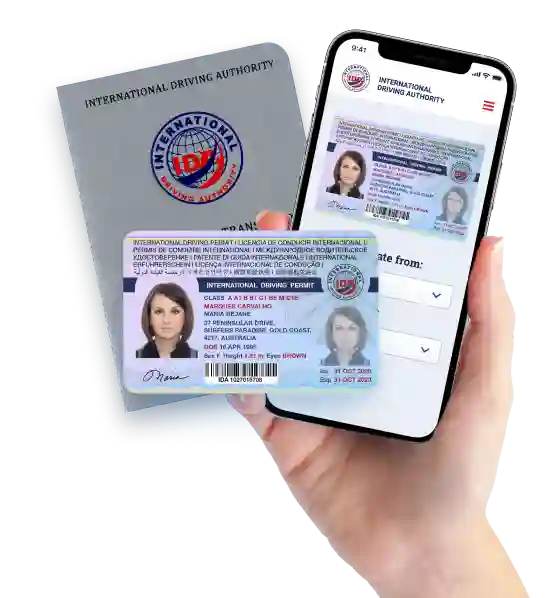Introduction
In today's digital age, innovation plays a crucial role in the management of various elements of our lives. One location where technology has shown exceptional potential remains in the management of Internally Displaced Persons (IDPs). The predicament of IDPs frequently occurs from conflict, natural disasters, or systemic discrimination, resulting in significant difficulties in supplying them with necessary assistance. This post checks out how ingenious innovations can help resolve these obstacles, enhance processes, and enhance the overall management of IDPs.
Utilizing Technology To Handle IDPs
The management of IDPs requires robust structures that can adjust to their progressing requirements. Making use of innovation to handle IDPs enables companies and governments to respond more effectively by leveraging data analytics, mobile applications, and blockchain technology. Through these tools, stakeholders can offer much better services, track displacement patterns, and improve interaction with affected populations.
1. Understanding the Idea of IDPs
Internally Displaced Individuals (IDPs) refer to individuals who have been required to leave their homes however stay within their nation's borders. Unlike refugees who cross international borders, IDPs deal with special obstacles related to legal defenses and access to assistance. Comprehending these characteristics is essential for efficient management.
1.1 The Reasons for Internal Displacement
Internal displacement can stem from numerous factors:
- Armed Conflict: Ongoing wars or civil unrest lead many individuals to leave their homes. Natural Catastrophes: Earthquakes, floods, and other catastrophes force neighborhoods to evacuate. Development Projects: Facilities tasks may displace populations without appropriate compensation or resettlement plans.
1.2 The Impact of Internal Displacement on Communities
The impacts on displaced persons are extensive:
- Loss of Livelihoods: Numerous lose their jobs and means of support. Psychological Injury: The experience of displacement can result in psychological health issues. Social Fragmentation: Communities may end up being fragmented as households are separated.
2. Existing Challenges in Handling IDPs
Managing IDP populations provides a number of difficulties for governments and humanitarian companies:
2.1 Absence of Precise Data
Without accurate information about the number and area of IDPs, it becomes tough to assign resources effectively.
2.2 Inadequate Interaction Channels
Many displaced people lack access to reliable details relating to offered support services or safe areas.
2.3 Coordination Among Stakeholders
Multiple companies typically work separately; coordination is crucial for reliable reaction efforts.
3. Function of Technology in Resolving Challenges
Technology provides options that can assist conquer these difficulties:
3.1 Data Analytics for Better Decision-Making
By making use of information analytics platforms, companies can analyze trends in displacement patterns, assisting them make informed choices about resource allocation.
3.2 Mobile Applications for Real-Time Details Sharing
Mobile apps can help with communication between displaced individuals and help organizations-- providing updates on readily available resources or safe locations.
3.3 Blockchain Innovation for Transparency
Blockchain technology cultivates transparency by securely tape-recording deals connected to assist distribution-- making sure that resources reach those who require them most.
4. Case Research Studies Showing Effective Use of Technology
Several efforts worldwide display how technology has actually effectively handled IDP crises:
4.1 The United Nations' Usage of Geographic Information Systems (GIS)
The UN employs GIS technology to map displacement patterns accurately; this aids in planning interventions efficiently.
4.2 The Function of Social Media Platforms in Crisis Communication
Social media has proven vital for real-time updates throughout crises-- helping firms interact quickly with affected populations.
5. Strategies for Implementing Innovation Solutions
To effectively use technology in managing IDP circumstances:
5.1 Engaging Resident Communities
Local communities need to be involved in developing tech solutions; they comprehend their needs best.
5.2 Making sure Accessibility
Ensuring that technological services are available to all segments of the population is crucial-- think about language barriers and literacy levels.

6. Future Patterns in Technological Solutions for Managing IDPs
As we look ahead:
6.1 Expert system (AI) Enhancements
AI could even more enhance predictive analytics relating to displacement patterns-- assisting organizations prepare for crises before they escalate.
6.2 Increased Collaboration Across Borders
Global partnership could cause shared databases and resources that improve responses throughout areas experiencing comparable challenges.
7. Conclusion: A Call for Innovative Approaches
The management of Internally Displaced Persons requires a multi-faceted approach including sophisticated technological options tailored specifically for their requirements-- making it crucial for governments and organizations alike to invest time and resources into these innovations.
FAQs
Q1: What should I do if I am an internally displaced person? A1: Look for help from local NGOs or federal government agencies dedicated to assisting displaced people find shelter and resources.
Q2: How does technology improve communication amongst help agencies? A2: Technology improves details sharing through platforms that allow real-time updates concerning available services or modifications in conditions affecting IDPs.
Q3: Can I obtain a worldwide driver's license online while being displaced? A3: Yes! Many countries use online services where you can request a worldwide driver's license even if you're presently displaced; simply inspect your local regulations!
Q4: What are some examples of mobile apps developed for IDP assistance? A4: Apps like "Refugee Friend" deal information on available services while "Disaster Emergency situation" offers informs during crises affecting your area!
Q5: How does blockchain make sure openness in aid distribution? A5: International driving license online Blockchain records transactions firmly so that every help distribution is traceable; this decreases corruption threats ensuring resources reach those who need them!
Q6: Are there particular innovations being established for use in Spain concerning internal displacement? A6: Yes! Numerous local NGOs are working together with tech companies to develop applications concentrated on helping internally displaced individuals specifically within Spain's unique context.
In conclusion, making use of innovation uses unprecedented chances when handling Internally Displaced Persons efficiently-- it's not simply about responding faster but tailoring services that respect human dignity while addressing intricate logistical obstacles head-on!